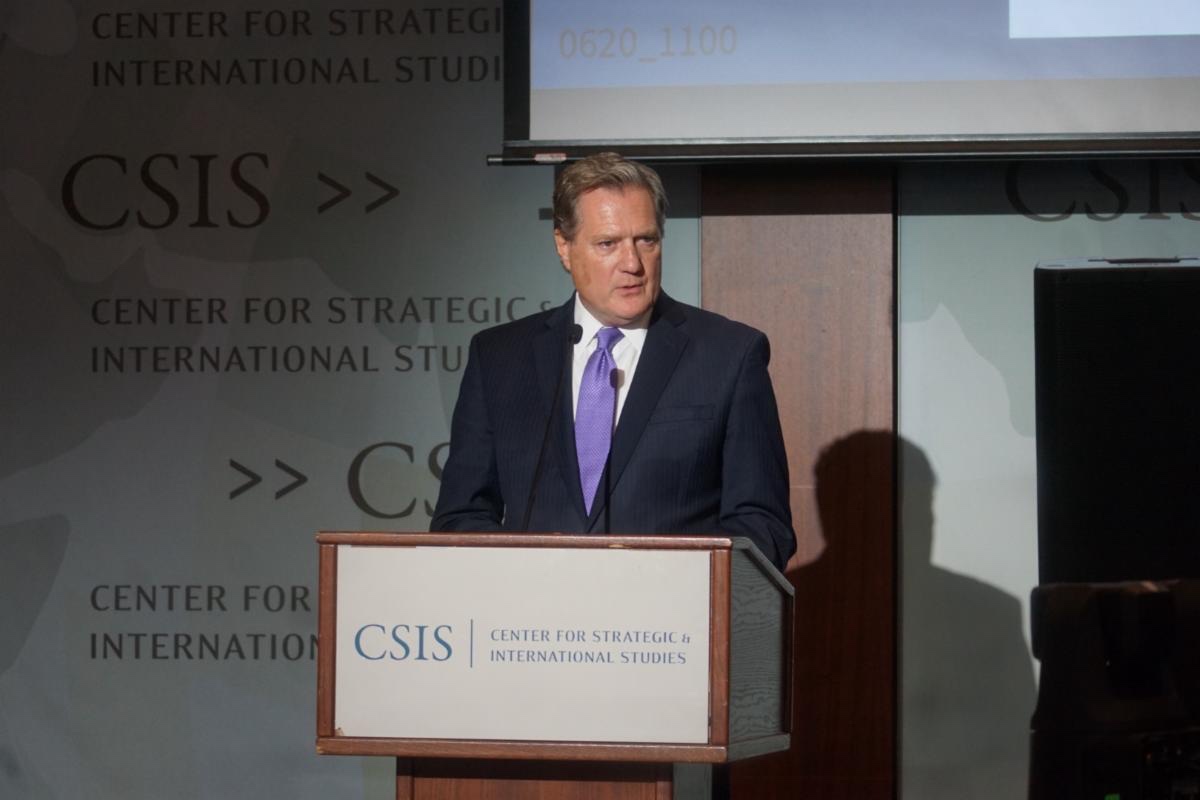At the insistence of Rep. Mike Turner (R-Ohio), chair of the House Intelligence Committee, the world now knows that Russia is developing some type of nuclear device that could be deployed on an orbiting satellite. No other intelligence has been publicly disclosed to indicate intent, but there’s a lot of hand wringing in the White House, at the Pentagon, and on Capitol Hill — as there should be.
There is plenty of talk today that U.S. leadership’s fervent pacing might be devolving into complete panic, something Pentagon planners are all too famous for doing.
During the Cold War, we developed and openly disclosed our radiation hardened satellites, essential to a key piece of deterrence strategy: our ability to retaliate even in the event of a successful Soviet first strike. Many of those systems remain today and need to stay hardened to ensure that particular component of our strategic deterrent remains unassailable.
But the overreacting policymakers in Washington must not fall prey to the notion that in response to Russia’s threat we ought to “nuke proof” every electronic system on orbit. This is now strongly rumored to being seriously considered by White House and senior executives in the Office of the Secretary of Defense.
Before this reactionary thinking takes further root, senior policymakers must remember three fundamental truths that should stop them in their tracks.
First, Russia is just as deterred today as it was during the Cold War to not attack any U.S. infrastructure with a nuclear weapon. Doing so would prompt an immediate retaliatory nuclear strike, a key tenet of our deterrence posture. Even with America’s deteriorating nuclear triad now plagued with its own cost overruns, there remains no doubt to nuclear capable nations everywhere that a proportional response to a nuclear attack is both essential and morally justified.
Second, until nuclear hardened chipsets can be made as readily available as their commercial counterparts, layering on this unnecessary requirement would delay the delivery of much needed satellites for the next-generation of low Earth orbit constellation providing direct support to U.S. warfighting commands. The Defense Department’s shift to distributed satellite constellations in LEO does create new unique challenges that must be addressed. But it presents us with dramatic gains in resiliency with a layered, hybrid defense.
Insisting on hardening everything on orbit would have been an unnecessary policy even during the height of the Cold War. And given the supply of readily available, inexpensive commercial satellites today, it would be actually counterproductive.
Third, the most powerful deterrent to an attack on our satellites, nuclear or otherwise, is to deny the attacker the benefit of such an attack. The U.S. must confront this threat by leveraging and demonstrating its support of our robust commercial satellite industry. By doing so, we show that our resiliency is not just with orbital assets but by a rapid responsiveness if such an attack were to occur.
There are several U.S. commercial satellite companies already delivering highly capable satellites in less than two years, a far more responsive timeline than the 10-15 years it takes to develop and launch hardened satellites from a bygone era.
The Space Force’s solid support for the commercial space industry bolsters the role of the private sector as a component of a new strategic deterrent. Its verified ability to provide unique intelligence reports in hot spots around the globe like China and Ukraine demonstrates it beyond a doubt.
Industry’s role in strategic deterrence
The most surefire way to ensure competency if a Russian anti-satellite weapon strike were to occur is to have a responsive space capability — always on alert, with a rolling commercial inventory of mission-critical satellites at a price tag of $5 million to 10 million each that would be ready for immediate shipping to launch sites.
The Space Force has already demonstrated the ability to rapidly launch satellites on short notice through its efforts with the Victus Nox program. Imagine if we accelerate these goals and streamline these timelines to less than 24 hours.
We cannot be overwhelmed with fear just because our country faces a slightly new type of threat. We must remember the fundamentals of military strategy, because most of them have not changed since first penned by Sun Tzu about 2,500 years ago.
What has changed, however, is our government’s approach to fielding commercial satellites at an eye-watering rate to bolster our space-based capabilities, and we need not handicap this progress with additional requirements handed down from Washington as a result of a single threat on the horizon meant to delay our progress as an adversary.
Rather than a reversion to the strategy of our forefathers, a forward-looking policy approach that leverages a robust and growing satellite marketplace will ensure we have the end-to-end industrial might to rapidly launch replacement satellites in parallel to strike forces conducting the retaliatory blow.
We cannot allow a new generation of space warrior leaders to be manipulated into believing we need to prepare for future wars by planning to fight the one from last century. It didn’t work for the French in World War I or World War II, and it won’t work for us now. The game is different, but the guiding strategic principles remain. All that’s left is for the most innovative thinkers to rise to the occasion and not cower at the present fight.
